- Download Price:
- Free
- Dll Description:
- Microsoft FrontPage Server Extensions
- Versions:
- Size:
- 0.02 MB
- Operating Systems:
- Directory:
- A
- Downloads:
- 1968 times.
What is Admin.dll?
The Admin.dll file is 0.02 MB. The download links for this file are clean and no user has given any negative feedback. From the time it was offered for download, it has been downloaded 1968 times.
Table of Contents
- What is Admin.dll?
- Operating Systems That Can Use the Admin.dll File
- Other Versions of the Admin.dll File
- How to Download Admin.dll File?
- How to Fix Admin.dll Errors?
- Method 1: Copying the Admin.dll File to the Windows System Folder
- Method 2: Copying The Admin.dll File Into The Software File Folder
- Method 3: Doing a Clean Reinstall of the Software That Is Giving the Admin.dll Error
- Method 4: Solving the Admin.dll Problem by Using the Windows System File Checker (scf scannow)
- Method 5: Fixing the Admin.dll Error by Manually Updating Windows
- The Most Seen Admin.dll Errors
- Dll Files Similar to the Admin.dll File
Operating Systems That Can Use the Admin.dll File
Other Versions of the Admin.dll File
The newest version of the Admin.dll file is the 10.0.6754.0 version. There have been 1 versions released before this version. All versions of the Dll file have been listed below from most recent to oldest.
- 10.0.6754.0 - 32 Bit (x86) Download this version
- 4.0.2.7523 - 32 Bit (x86) (2012-06-30) Download this version
How to Download Admin.dll File?
- First, click on the green-colored "Download" button in the top left section of this page (The button that is marked in the picture).

Step 1:Start downloading the Admin.dll file - "After clicking the Download" button, wait for the download process to begin in the "Downloading" page that opens up. Depending on your Internet speed, the download process will begin in approximately 4 -5 seconds.
How to Fix Admin.dll Errors?
ATTENTION! In order to install the Admin.dll file, you must first download it. If you haven't downloaded it, before continuing on with the installation, download the file. If you don't know how to download it, all you need to do is look at the dll download guide found on the top line.
Method 1: Copying the Admin.dll File to the Windows System Folder
- The file you will download is a compressed file with the ".zip" extension. You cannot directly install the ".zip" file. Because of this, first, double-click this file and open the file. You will see the file named "Admin.dll" in the window that opens. Drag this file to the desktop with the left mouse button. This is the file you need.
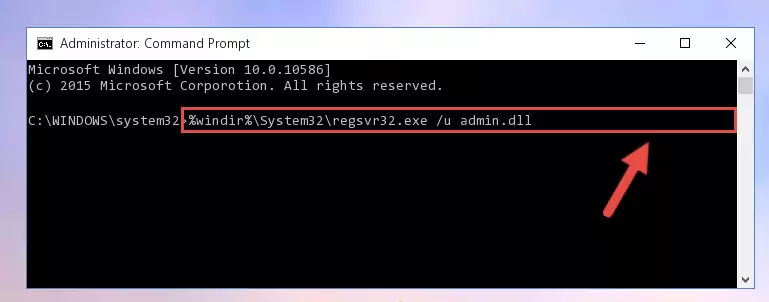
Step 1:Extracting the Admin.dll file from the .zip file - Copy the "Admin.dll" file you extracted and paste it into the "C:\Windows\System32" folder.
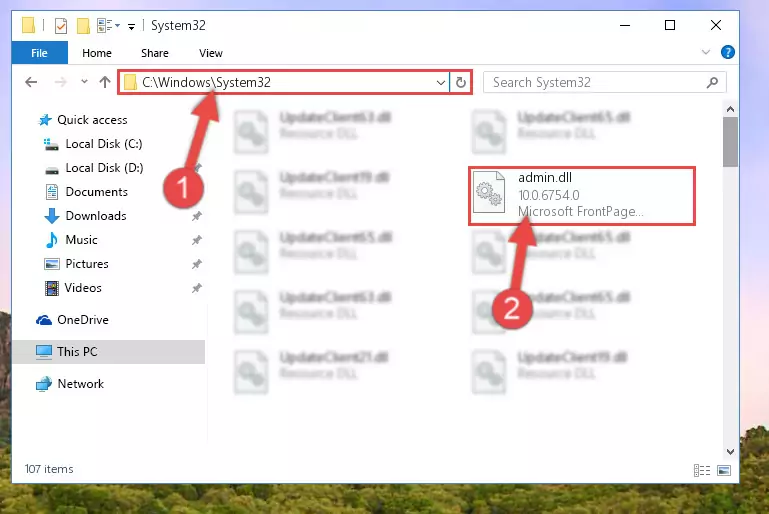
Step 2:Copying the Admin.dll file into the Windows/System32 folder - If your system is 64 Bit, copy the "Admin.dll" file and paste it into "C:\Windows\sysWOW64" folder.
NOTE! On 64 Bit systems, you must copy the dll file to both the "sysWOW64" and "System32" folders. In other words, both folders need the "Admin.dll" file.
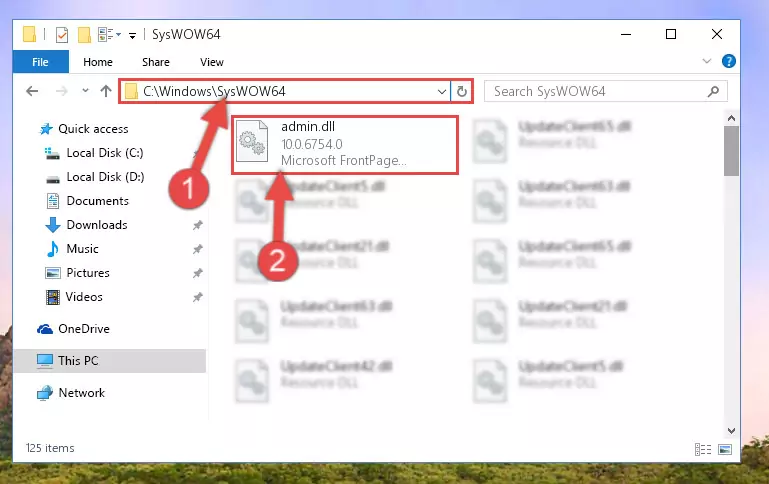
Step 3:Copying the Admin.dll file to the Windows/sysWOW64 folder - First, we must run the Windows Command Prompt as an administrator.
NOTE! We ran the Command Prompt on Windows 10. If you are using Windows 8.1, Windows 8, Windows 7, Windows Vista or Windows XP, you can use the same methods to run the Command Prompt as an administrator.
- Open the Start Menu and type in "cmd", but don't press Enter. Doing this, you will have run a search of your computer through the Start Menu. In other words, typing in "cmd" we did a search for the Command Prompt.
- When you see the "Command Prompt" option among the search results, push the "CTRL" + "SHIFT" + "ENTER " keys on your keyboard.
- A verification window will pop up asking, "Do you want to run the Command Prompt as with administrative permission?" Approve this action by saying, "Yes".

%windir%\System32\regsvr32.exe /u Admin.dll
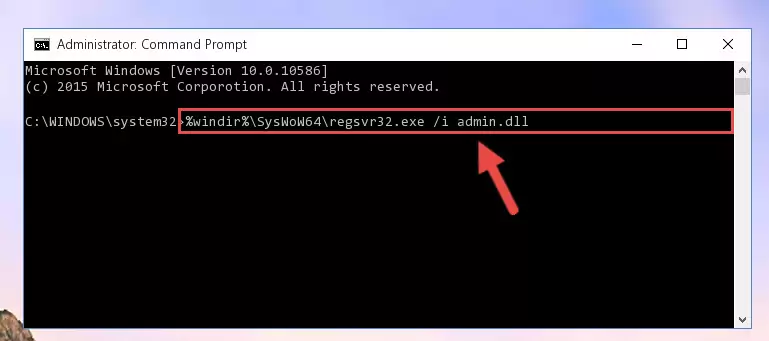
%windir%\SysWoW64\regsvr32.exe /u Admin.dll
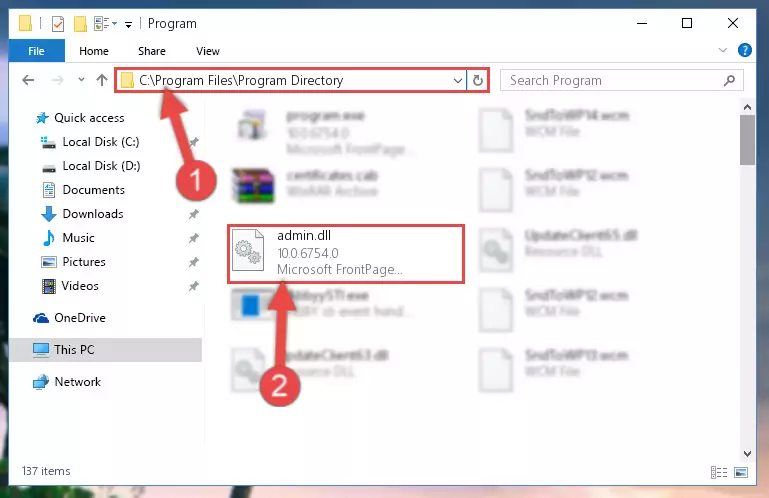
%windir%\System32\regsvr32.exe /i Admin.dll
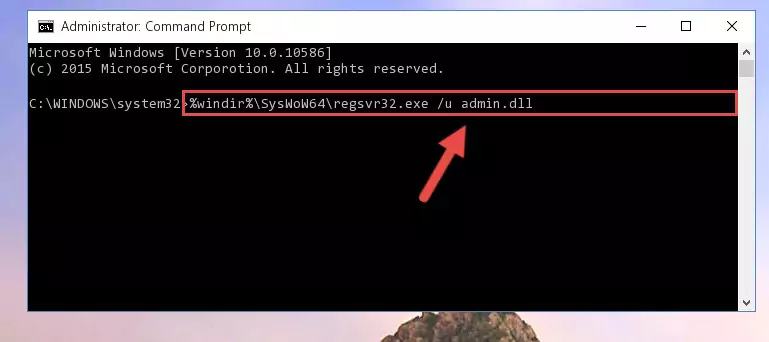
%windir%\SysWoW64\regsvr32.exe /i Admin.dll
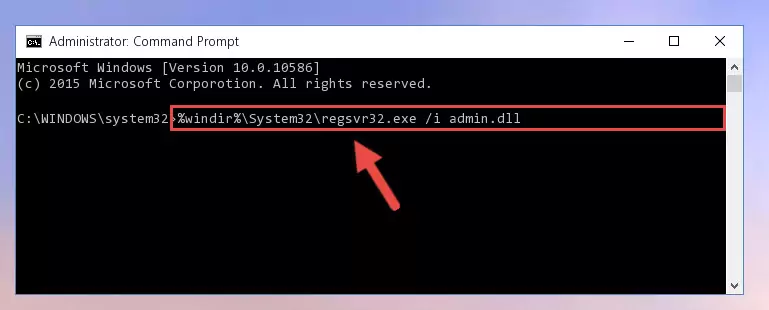
Method 2: Copying The Admin.dll File Into The Software File Folder
- First, you need to find the file folder for the software you are receiving the "Admin.dll not found", "Admin.dll is missing" or other similar dll errors. In order to do this, right-click on the shortcut for the software and click the Properties option from the options that come up.

Step 1:Opening software properties - Open the software's file folder by clicking on the Open File Location button in the Properties window that comes up.

Step 2:Opening the software's file folder - Copy the Admin.dll file into this folder that opens.
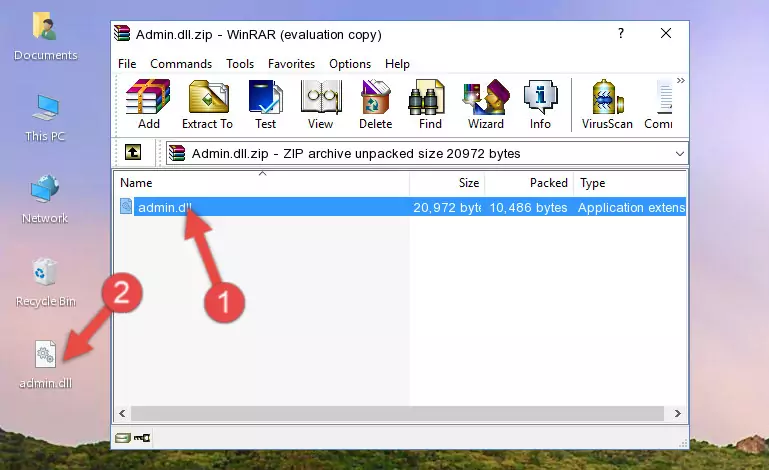
Step 3:Copying the Admin.dll file into the software's file folder - This is all there is to the process. Now, try to run the software again. If the problem still is not solved, you can try the 3rd Method.
Method 3: Doing a Clean Reinstall of the Software That Is Giving the Admin.dll Error
- Press the "Windows" + "R" keys at the same time to open the Run tool. Paste the command below into the text field titled "Open" in the Run window that opens and press the Enter key on your keyboard. This command will open the "Programs and Features" tool.
appwiz.cpl

Step 1:Opening the Programs and Features tool with the Appwiz.cpl command - The softwares listed in the Programs and Features window that opens up are the softwares installed on your computer. Find the software that gives you the dll error and run the "Right-Click > Uninstall" command on this software.

Step 2:Uninstalling the software from your computer - Following the instructions that come up, uninstall the software from your computer and restart your computer.

Step 3:Following the verification and instructions for the software uninstall process - After restarting your computer, reinstall the software.
- This process may help the dll problem you are experiencing. If you are continuing to get the same dll error, the problem is most likely with Windows. In order to fix dll problems relating to Windows, complete the 4th Method and 5th Method.
Method 4: Solving the Admin.dll Problem by Using the Windows System File Checker (scf scannow)
- First, we must run the Windows Command Prompt as an administrator.
NOTE! We ran the Command Prompt on Windows 10. If you are using Windows 8.1, Windows 8, Windows 7, Windows Vista or Windows XP, you can use the same methods to run the Command Prompt as an administrator.
- Open the Start Menu and type in "cmd", but don't press Enter. Doing this, you will have run a search of your computer through the Start Menu. In other words, typing in "cmd" we did a search for the Command Prompt.
- When you see the "Command Prompt" option among the search results, push the "CTRL" + "SHIFT" + "ENTER " keys on your keyboard.
- A verification window will pop up asking, "Do you want to run the Command Prompt as with administrative permission?" Approve this action by saying, "Yes".

sfc /scannow

Method 5: Fixing the Admin.dll Error by Manually Updating Windows
Most of the time, softwares have been programmed to use the most recent dll files. If your operating system is not updated, these files cannot be provided and dll errors appear. So, we will try to solve the dll errors by updating the operating system.
Since the methods to update Windows versions are different from each other, we found it appropriate to prepare a separate article for each Windows version. You can get our update article that relates to your operating system version by using the links below.
Guides to Manually Update the Windows Operating System
The Most Seen Admin.dll Errors
If the Admin.dll file is missing or the software using this file has not been installed correctly, you can get errors related to the Admin.dll file. Dll files being missing can sometimes cause basic Windows softwares to also give errors. You can even receive an error when Windows is loading. You can find the error messages that are caused by the Admin.dll file.
If you don't know how to install the Admin.dll file you will download from our site, you can browse the methods above. Above we explained all the processes you can do to solve the dll error you are receiving. If the error is continuing after you have completed all these methods, please use the comment form at the bottom of the page to contact us. Our editor will respond to your comment shortly.
- "Admin.dll not found." error
- "The file Admin.dll is missing." error
- "Admin.dll access violation." error
- "Cannot register Admin.dll." error
- "Cannot find Admin.dll." error
- "This application failed to start because Admin.dll was not found. Re-installing the application may fix this problem." error
